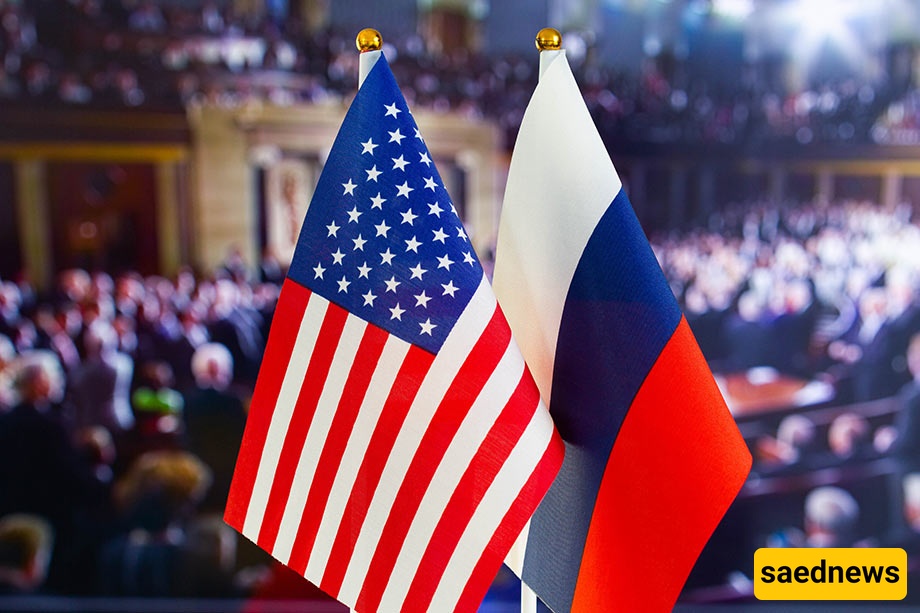SAEDNEWS: Recent developments in international politics and the Kremlin’s successes in diplomacy and security have presented new equations for the United States. Donald Trump now faces a series of difficult choices—choices that could impact both the future of Washington-Moscow relations and America’s position on the global stage.

According to SaedNews, citing CNN, the relationship between the United States and Russia has always been one of the central equations of international politics. From the Cold War era to the present day, any change in the relations between these two global powers has had widespread implications for international security and economy. At a time when Vladimir Putin has, in recent months, gained the upper hand in various arenas—from the Caucasus to the Middle East and even across Eurasia—the United States, particularly under Donald Trump’s presidency, is grappling with difficult questions about how to deal with Moscow.

Section One: Putin’s Victories on the Global Stage
Through active diplomacy, smart use of energy, and targeted military presence, Putin has strengthened Russia’s role in many regions. In the Middle East, Moscow has gained a privileged position by consolidating its presence in Syria and expanding military and economic cooperation with regional countries. In Europe, the energy dependence of many nations on Russian gas has made the Kremlin an unparalleled actor. Furthermore, Moscow’s closer ties with emerging powers like China and India have shifted the global balance increasingly in favor of the Kremlin.
Section Two: Pressure on U.S. Strategy
In light of these developments, Trump finds himself in a sensitive position. On one hand, his campaign promises to improve relations with Russia and reduce tensions have raised expectations both domestically and internationally. On the other hand, pressure from Congress, the media, and America’s European allies limits his room for maneuver. If Trump moves toward excessive closeness with Russia, he risks being accused of appeasement and weakening Washington’s position. But if he returns to a hardline policy, there is a danger of escalating confrontation and increasing military costs.
Section Three: Economic and Energy Dimensions
One of Russia’s most important instruments of power in recent years has been energy. Increasing exports of Russian gas and oil to Europe and Asia has not only provided the Kremlin with new financial resources but has also created mutual dependencies. Trump has attempted to disrupt this equation by encouraging the development of domestic energy resources and LNG exports. However, existing infrastructure and production costs continue to give Russia the upper hand. This issue has particularly become a source of tension in Washington’s relations with the European Union.
Section Four: Militarization and Arms Competition
By showcasing advanced military technologies, from hypersonic missiles to sophisticated air defense systems, Putin has sent a clear message to Washington: Russia is ready for full-scale competition in the arms arena. Trump, who emphasizes the “America First” slogan, now has to choose between increasing the military budget or addressing domestic economic pressures. This difficult balance has made decision-making in the White House more complex.
Section Five: Relations with Allies and Domestic Pressures
The U.S. stance toward Russia is not solely the result of Trump’s personal assessments. Pressure from European allies, particularly NATO, as well as Congress, which traditionally maintains a hardline view toward Moscow, plays a decisive role. If Trump seeks to deviate from the traditional path, he faces a domestic legitimacy crisis. This has caused many of his decisions regarding the Kremlin to appear contradictory.
Section Six: Russia’s Domestic Climate and Putin’s Legitimacy
Understanding Trump’s decisions without considering Russia’s domestic situation would be incomplete. Through foreign victories, Putin has been able to consolidate his legitimacy at home. These successes are presented in Moscow’s official narrative as the “restoration of Russia’s global power.” This limits Trump’s leverage over Moscow, as any form of concession by Putin could be perceived as a domestic defeat.
Section Seven: Scenarios Ahead for Trump
Appeasement and Limited Cooperation: Trump could pursue a controlled rapprochement with Moscow and cooperate in specific areas such as counterterrorism or arms control.
Return to Pressure Policies: Imposing additional sanctions and strengthening military presence in Europe is another option, though costly and risky.
A Combined Approach: The most realistic option for Trump may be to combine cooperation in specific areas while maintaining pressure in others.
Conclusion
Putin’s victories have placed the U.S. and Trump himself before difficult dilemmas. White House decisions will impact not only the future of Washington-Moscow relations but also the global power structure. In a rapidly changing world, any miscalculation could have consequences far beyond bilateral relations. All eyes are now on Washington to see how Trump intends to navigate this historical test.

